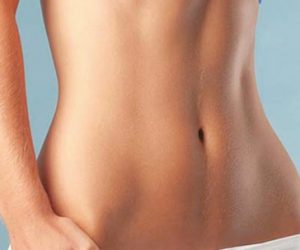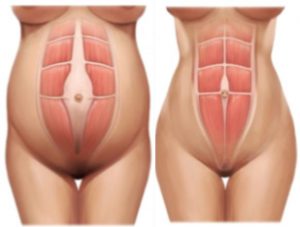 A tummy tuck is a surgery that corrects the excess and sagging skin in the abdominal region. In most cases, it is indicated after pregnancies or large variations in weight due to a large abdominal stretch.
A tummy tuck is a surgery that corrects the excess and sagging skin in the abdominal region. In most cases, it is indicated after pregnancies or large variations in weight due to a large abdominal stretch.
1. What type of anesthesia is used in abdominoplasty?
A tummy tuck is, in most cases, carried out by blockades such as epidural and spinal anesthesia, both are the same anesthesia used during C-sections. In some specific cases, general anesthesia may be necessary.
 2. Can lose abdominal muscles be repaired in this surgery?
2. Can lose abdominal muscles be repaired in this surgery?
Yes, we call this looseness muscular diastasis. Diastasis is very common after pregnancy or massive weight loss. The approximation of the edges of the rectus abdominis muscles is performed through suture with specific surgical threads.
3. What are the scars?
To perform the abdominoplasty an incision that is located just below a C-section scar is required (when it is present) extending to the side, usually to where the patient forms folds of skin in the abdomen while sitting. This scar is designed aiming to be hidden by bathing suits. An incision around the umbilicus is also required, which usually remains hidden within it.
4. Is the use of a drain necessary?
We use a drain in most patients who undergo abdominoplasty. The drain is very important to remove excess liquid from the abdominal region, preventing that they accumulate in the area of surgery. The drain outlet orifices are usually 2 stitches below the surgical wound, on the pubic area. The drain is painlessly removed around the 4th day of the postoperative period.
5. Can men also undergo abdominoplasty?
Yes. As long as there is enough excess skin to be removed, surgery is indicated.
6. Can I get pregnant again after abdominoplasty?
Yes. Even after surgery, the muscles and the abdominal skin may be distended with a new pregnancy without prejudice to pregnancy. We always ask if the patient wishes to have more children; because if she becomes pregnant after surgery, she may lose the aesthetic results. Therefore, have a long talk with your partner about the possibility of having children before you undergo surgery.
7. When will the stitches be removed?
For this type of surgery we use absorbable sutures, that is, wires that are degraded by the body after a few weeks. Thus, the stitches do not need to be removed, they will disappear by themselves. In the umbilical region, we use a non-absorbable suture. This wire is removed between 10 and 14 days after the surgery.
8. Is the surgery very painful?
Contrary to what you may think, abdominoplasty does not usually result in pain. The pain reported by some patients, is usually due to liposuction which can be performed in the same operation. For abdominoplasty, if there is pain, it is usually quite tolerable . Simple analgesics are prescribed for pain that the patient can take at home. prophylactically, that is, before they can feel pain.
9. Does the incision get very swollen and purple?
In the first five days, edema (swelling) and ecchymosis (purple) may be present. But, this will depend on how each patient responds to surgery.
10. How long does the surgery last?
From 2 to 3 hours.
11. How long will I need to stay in hospital?
From 12 to 24 hours.
12. Is lymphatic massage necessary?
The massages are very important. The first massage is performed about 4 days after surgery. They help in the early reduction of swelling and in scar remodeling. We recommend the execution of at least 10 massage sessions that may be performed on alternate days for a period of approximately 30 days.
13. Do I have to use compression garments after surgery?
Yes, the use of compression garments should be carried out for 30 days.

